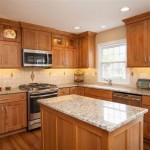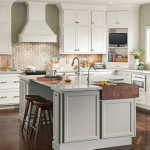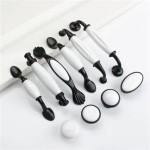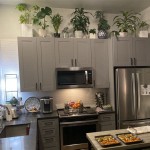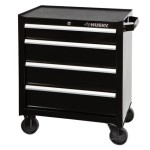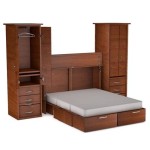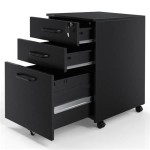Kilz Primer For Kitchen Cabinets: Achieving a Professional Finish
Kitchen cabinets, subjected to daily use and environmental factors like moisture and grease, often require repainting or refinishing to maintain their aesthetic appeal and structural integrity. A crucial step in achieving a durable and professional finish is the application of a high-quality primer. Kilz primer, a well-regarded brand in the painting industry, offers various formulations suitable for kitchen cabinet projects. This article will explore the benefits of using Kilz primer on kitchen cabinets, different types of Kilz primers appropriate for the task, the necessary preparation steps, application techniques, and troubleshooting common issues.
The primary function of a primer is to create a smooth, uniform, and properly prepared surface for the topcoat. Primer enhances paint adhesion, preventing peeling and chipping, and seals porous surfaces, ensuring even color distribution and minimizing the number of topcoat layers needed. In the context of kitchen cabinets, primer is particularly essential because cabinets are often made from materials like wood, laminate, or MDF (Medium-Density Fiberboard), each with unique properties that can affect paint adhesion and finish quality. The grease and grime accumulation prevalent in kitchens further necessitates a thorough cleaning and priming process.
Key Benefits of Using Kilz Primer on Kitchen Cabinets
Kilz primer offers several advantages when used on kitchen cabinets. Firstly, it provides excellent adhesion to a variety of surfaces commonly found in kitchen cabinetry, including wood, laminate, and previously painted surfaces. This ensures the topcoat adheres properly, resulting in a long-lasting finish. Secondly, Kilz primer effectively blocks stains, especially those resulting from grease, water damage, or marker stains, preventing them from bleeding through the topcoat and compromising the final appearance. Thirdly, many Kilz primers are formulated with mold and mildew resistance, which is crucial in a humid kitchen environment. This helps protect the cabinets from unsightly and potentially harmful mold growth.
Another significant benefit is Kilz primer's ability to create a uniform surface. Kitchen cabinets often have imperfections, such as small scratches, dents, or variations in texture. Kilz primer fills these imperfections, creating a smooth, even surface that enhances the appearance of the topcoat. Furthermore, Kilz primer can seal porous surfaces, preventing the topcoat from being absorbed unevenly. This reduces the number of topcoat layers needed and ensures a consistent color and sheen.
Finally, Kilz primer, particularly oil-based varieties, offers enhanced durability. It creates a tough, resilient base that can withstand the rigors of daily kitchen use. This is especially important for cabinets that are frequently touched and exposed to moisture and cleaning agents.
Types of Kilz Primers Suitable for Kitchen Cabinets
Kilz offers a range of primers, each with specific properties that make them suitable for different applications. For kitchen cabinets, the following Kilz primers are particularly effective:
Kilz Original: This oil-based primer is a classic choice for its excellent adhesion, stain-blocking capabilities, and durability. It is particularly well-suited for cabinets with existing stains or surfaces that require a robust base coat. However, oil-based primers require mineral spirits for cleanup and emit stronger odors than water-based alternatives. Proper ventilation is essential during application and drying.
Kilz 2 All-Purpose: This water-based primer offers good adhesion, stain-blocking, and mildew resistance. It is a versatile option suitable for a variety of cabinet materials and is easier to clean up than oil-based primers. Kilz 2 All-Purpose is a good choice for cabinets that are in good condition and do not require heavy-duty stain blocking.
Kilz Premium: This water-based primer offers enhanced stain-blocking capabilities and adhesion compared to Kilz 2 All-Purpose. It is a suitable choice for cabinets with moderate stains or surfaces that require a more robust primer coat. It also boasts low VOC (Volatile Organic Compounds), making it an environmentally friendly option.
Kilz Adhesion: This specialty primer is specifically designed for hard-to-bond surfaces, such as glossy laminates or previously painted cabinets with a slick finish. It creates a strong bond between the surface and the topcoat, preventing peeling and chipping. Kilz Adhesion primer is an excellent choice for cabinets that are difficult to prepare or that have a history of paint adhesion problems.
The selection of the appropriate Kilz primer depends on the cabinet material, the presence of stains, and the desired level of durability. It is advisable to consult the product label and consider conducting a small test patch on an inconspicuous area of the cabinet to ensure compatibility and desired results.
Preparation Steps Before Priming Kitchen Cabinets
Proper preparation is crucial for achieving a successful and long-lasting finish on kitchen cabinets. The following steps should be taken before applying Kilz primer:
Removal of Hardware: Begin by removing all hardware, including knobs, pulls, hinges, and latches. This ensures a clean, unobstructed surface for painting and prevents paint from getting on the hardware. Store the hardware in a safe place to avoid losing any pieces.
Cleaning: Thoroughly clean the cabinets to remove grease, dirt, and grime. Use a degreasing cleaner specifically designed for kitchen surfaces. Wipe down the cabinets with a damp cloth to remove any residue from the cleaner. Allow the cabinets to dry completely before proceeding.
Sanding: Sanding is essential for creating a smooth surface and improving adhesion. Use medium-grit sandpaper (120-150 grit) to scuff sand the cabinets, focusing on areas that are glossy or have imperfections. For laminate cabinets, use a finer grit sandpaper (220 grit) to avoid damaging the surface. After sanding, wipe down the cabinets with a tack cloth to remove any dust.
Repairing Damage: Fill any holes, dents, or cracks with wood filler or spackle. Allow the filler to dry completely according to the manufacturer's instructions. Sand the filled areas smooth to blend with the surrounding surface. Wipe away any dust with a tack cloth.
Masking: Protect surrounding surfaces, such as countertops, walls, and appliances, with painter's tape and drop cloths. This will prevent paint splatters and ensure clean lines.
These preparation steps, although time-consuming, are essential for ensuring that the Kilz primer adheres properly and provides a smooth, uniform base for the topcoat. Neglecting these steps can lead to adhesion problems, uneven coverage, and a less-than-professional finish.
Application Techniques for Kilz Primer on Kitchen Cabinets
The application of Kilz primer should be performed carefully and methodically to achieve optimal results. The following techniques are recommended:
Choosing the Right Tools: Use a high-quality brush, roller, or sprayer designed for the type of primer being used. For oil-based primers, use a natural bristle brush. For water-based primers, use a synthetic bristle brush. A foam roller is suitable for smooth surfaces, while a nap roller is better for textured surfaces. A sprayer can provide a smooth, even finish, but requires more skill and preparation.
Applying Thin, Even Coats: Apply the primer in thin, even coats, avoiding drips and runs. Overlapping strokes slightly will ensure complete coverage. Allow each coat to dry completely according to the manufacturer's instructions before applying the next coat. Generally, one to two coats of primer are sufficient.
Sanding Between Coats: After the first coat of primer has dried, lightly sand the surface with fine-grit sandpaper (220 grit) to remove any imperfections and create a smoother surface for the second coat. Wipe away any dust with a tack cloth before applying the second coat.
Paying Attention to Detail: Pay close attention to edges, corners, and crevices. Use a small brush to reach these areas. Avoid applying too much primer in these areas, as it can lead to drips and runs.
Maintaining Proper Ventilation: Ensure adequate ventilation during application and drying, especially when using oil-based primers. Open windows and doors, or use a fan to circulate air.
Following these application techniques will help ensure a smooth, even, and durable primer coat that provides a solid foundation for the topcoat.
Troubleshooting Common Issues When Using Kilz Primer on Kitchen Cabinets
Even with careful preparation and application, some common issues may arise when using Kilz primer on kitchen cabinets. Here are some troubleshooting tips:
Poor Adhesion: If the primer is not adhering properly, it may be due to inadequate surface preparation. Ensure the cabinets are thoroughly cleaned, sanded, and free of any contaminants. Consider using Kilz Adhesion primer for hard-to-bond surfaces. Also, check the expiration date of the primer, as old primer may lose its adhesive properties.
Stain Bleed-Through: If stains are bleeding through the primer, it may be necessary to apply a second coat of primer. For particularly stubborn stains, consider using Kilz Original oil-based primer, which offers superior stain-blocking capabilities. Ensure the primer is fully dry before applying the topcoat.
Uneven Coverage: Uneven coverage can be caused by applying the primer too thinly or unevenly. Apply the primer in thin, even coats, overlapping strokes slightly. Sanding between coats can also help to smooth out any imperfections and ensure even coverage.
Drips and Runs: Drips and runs are typically caused by applying the primer too thickly. Avoid applying too much primer at once. If drips or runs occur, sand them smooth after the primer has dried completely.
Bubbling: Bubbling can be caused by applying primer to a damp surface or by applying a thick coat of primer in humid conditions. Ensure the cabinets are completely dry before applying primer. Avoid applying primer in extremely humid conditions. If bubbles appear, sand them smooth after the primer has dried completely.
Addressing these issues promptly and effectively will help ensure a successful and professional finish on kitchen cabinets. Careful observation and attention to detail throughout the process are essential for achieving optimal results.

A Step By Guide To Painting Kitchen Cabinets With Kilz Primer Blog

Top Primers For Kitchen Projects The Perfect Finish Blog By Kilz

Refinish Kitchen Cabinets With Kilz Restoration Primer

Pro Spotlight Tom Kraeutler Talks Kitchen Cabinets The Perfect Finish Blog By Kilz

Best Primer For Kitchen Cabinets In 2024

Kilz Kitchen Bath Interior Mildew Resistant Water Based Primer 1 Quart Walmart Com

Kilz How To Refinish Kitchen Cabinets Youtube

Kilz Kitchen And Bath Primer Interior Multi Purpose Oil Based Wall Ceiling 13 Oz At Lowes Com

A Step By Guide To Painting Kitchen Cabinets With Kilz Primer Blog

Kilz Kitchen And Bath Primer Interior Multi Purpose Water Based Wall Ceiling 1 Gallon At Lowes Com

